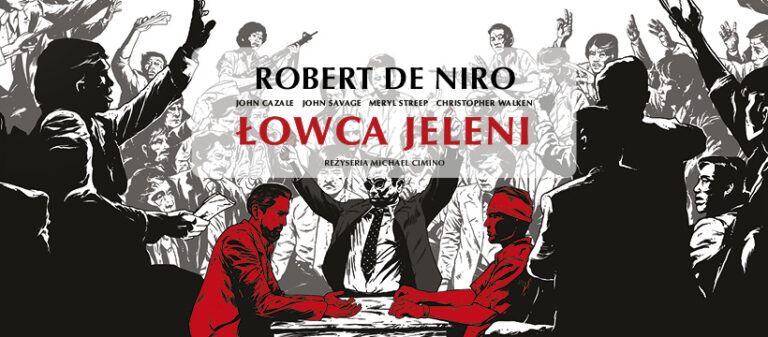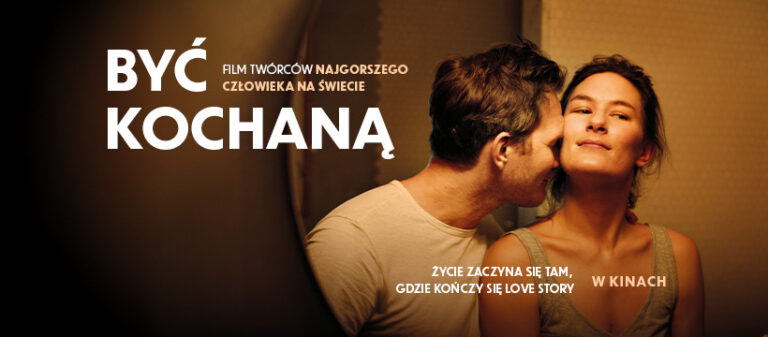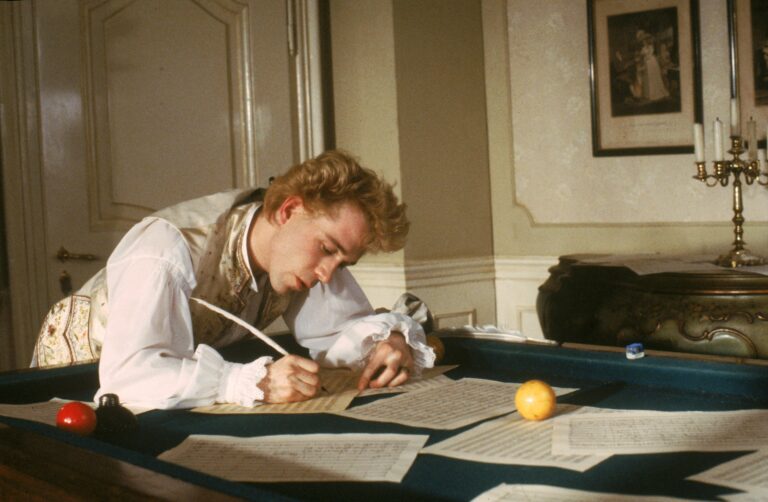
Maja, mimo że poświęciła aktorstwu całe swoje młode życie, zmaga się z brakiem wiary w siebie i rozważa podjęcie studiów na innym kierunku. Wszystko zmienia się, gdy pojawia się nowy, pełen pasji reżyser, który stosuje wątpliwe metody pracy. Ma przygotować dyplom ze studentami, a Maja dostaje nową szansę i zaczyna działać z ogromnym zaangażowaniem. Jednak z czasem boleśnie się przekonuje, że charyzmatyczny reżyser manipuluje nie tylko jej uczuciami, ale również relacjami i aspiracjami pozostałych młodych aktorów. Czy studenci zdołają oprzeć się legendarnemu twórcy? Jaka jest cena marzeń?
- Nagrody zdobyte na 49. Festiwalu Polskich Filmów Fabularnych w Gdyni:
Najlepszy debiut reżyserski lub drugi film – wyróżnienie Korek Bojanowski, wyróżnienie dla Nel Kaczmarek
- Don Kichot – Nagroda Polskiej Federacji Dyskusyjnych Klubów Filmowych Korek Bojanowski,
- Nagroda im. Janusza “Kuby” Morgensterna PERSPEKTYWA za rok 2024
- Nagroda Ministry Kultury i Dziedzictwa Narodowego w kategorii Film za rok 2024.
"André Rieu. Wesołych Świąt!" - Najnowszy koncert bożonarodzeniowo-noworoczny
Zobacz z najbliższymi nowy bożonarodzeniowo-noworoczny koncert André Rieu i jego Orkiestry Johanna Straussa! Najnowsze kinowe widowisko króla walca nosi tytuł „Wesołych Świąt!” i przeniesie Was w prawdziwie magiczny świat świątecznej muzyki i radości. Usłyszycie najpiękniejsze kolędy, cudowne walce i polki oraz bożonarodzeniowe hity. A Emma Kok zaśpiewa dla Was „Mam tę moc” z filmu „Kraina lodu”. To wszystko i inne muzyczne niespodzianki rozgrzeją Wasze serca i wprowadzą Was w atmosferę Bożego Narodzenia oraz Nowego Roku.
Boże Narodzenie i Nowy Rok od zawsze były ulubionym czasem André. Nic więc dziwnego, że z ogromną radością dzieli się on co roku swoim wyjątkowym świątecznym show, nie tylko z publicznością, która na żywo podziwia jego grudniowe występy w Maastricht, ale także z widzami zgromadzonymi w kinach całego świata. To sprawia, że jego świąteczne koncerty ogląda milionowa publiczność.
Maestro wraz ze swoją fenomenalną Orkiestrą Johanna Straussa jak zawsze przygotował widowisko pełne ciepła, śmiechu i emocji. Wśród zaproszonych gości znalazła się fenomenalna Emma Kok, która już podbiła serca publiczności na całym świecie. Na estradę zaś wkroczy 400-osobowa orkiestra dęta, która wykona tradycyjną pieśń „Go Tell It on the Mountain”. Muzycy ci także wesprą swym majestatycznym brzmieniem Annę Reker, która zaśpiewa kolędę „Dzwoneczków dźwięk”.
To coś więcej niż zwykły świąteczny koncert. To pełne muzycznych prezentów i przesycone magiczną atmosferą Bożego Narodzenia kinowe wydarzenie, które na długo pozostanie w pamięci Twojej i Twoich najbliższych.
„Łowca jeleni” Michaela Cimino to jeden z najważniejszych i wywołujących najbardziej żarliwe dyskusje tytułów w dziejach kina. Laureat pięciu Oscarów, w tym za najlepszy film, najlepszą reżyserię oraz najlepszą drugoplanową rolę męską. To pełna rozmachu, a zarazem zaskakująco intymna opowieść o przyjaźni, lojalności i cenie, jaką płaci się za dojrzewanie w cieniu historii.
W niewielkim górniczym miasteczku w Pensylwanii trzej nierozłączni przyjaciele – Michael (Robert De Niro), Nick (Christopher Walken) i Steven (John Savage) – pracują w hucie. Wieczorami spotykają się w barze i jeżdżą razem na polowania, ciesząc się prostym życiem. Ich codzienność, z pozoru zwyczajna, nabiera tragicznej głębi, gdy zostają powołani do wojska i wysłani – tuż po hucznym ślubie Stevena – na wojnę w Wietnamie.
Cimino z niezwykłą precyzją buduje świat, w którym wielu widzów może się przejrzeć, a potem krok po kroku go burzy – raz w huku wystrzałów i wybuchów, a innym razem w ciszy, w której walka z powracającymi traumami wydaje się skazana na porażkę. W „Łowcy jeleni” zderzenie ludzkiej lojalności z bezsensem wojny ma wymiar nie tylko dramatyczny, lecz także uniwersalny. To historia o przyjaźni wystawionej na najtrudniejszą próbę, o granicach odwagi, o miłości, która nie wszystko jest w stanie ocalić, i o tym, że czasem jeden moment zmienia wszystko.
Tego filmu nie da się zapomnieć.
„Być kochaną” – nowy film producentów „Najgorszego człowieka na świecie” – przewrotnie przypomina, że najważniejsza z miłości to ta, którą obdarzamy siebie samych. Czerpiąc z własnych doświadczeń, debiutująca w pełnym metrażu Lilja Ingolfsdottir stworzyła wielowymiarową opowieść o kobiecie, która po porażce pierwszego związku ma odwagę dać sobie drugą szansę. Wyróżniony aż pięcioma nagrodami na festiwalu w Karlowych Warach oraz niekwestionowany zwycięzca norweskiego odpowiednika Oscarów, „Być kochaną” urzeka empatią i szczerością w stawianiu pytań o miłość, bliskość i samoakceptację.
Maria (Helga Guren) wchodzi w kolejną relację z nadzieją na nowy początek. Wystarczy jedno spojrzenie i czuje się, jakby znała Sigmunda (Oddgeir Thune) całe życie, a namiętny romans szybko przeradza się w poważny związek. Historia w „Być kochaną” zaczyna się tam, gdzie kończy się większość love stories. Codzienność w patchworkowej rodzinie szybko ujawnia niespełnione ambicje, niewyrażone uczucia i sprzeczne potrzeby, które kumulują się w emocjonalną bombę – a ta pewnego wieczoru wybucha.
W „Być kochaną” przejrzy się wiele kobiet, które starają się pogodzić bycie partnerką i matką, bez rezygnowania z siebie. Empatyczny, ale stawiający na szczerość, pełen gniewu i łez, a jednak terapeutyczny film Norweżki proponuje głęboką refleksję nad tym, kim jesteśmy w relacjach i z czego rezygnujemy, próbując sprostać cudzym oczekiwaniom. „Być kochaną” pozwala jednak uwierzyć w kolejną szansę, widząc w kryzysie początek pięknej, nowej relacji: ze sobą.
Wielki geniusz. Szalona zazdrość. Niedościgłe widowisko. /
reż. Miloš Forman, USA (wersja kinowa)
Porywająca historia muzycznego geniusza Mozarta (Tom Hulce) i jego zazdrosnego przeciwnika Salieriego (F. Murray Abraham) to nagrodzony 8 Oscarami wielki spektakl Formana oraz jeden z najlepszych filmów kostiumowych w historii kina. W scenerii XVIII-wiecznego Wiednia rozegra się pełen pasji, gniewu i uniesień pojedynek między dwoma bohaterami, których dzieli prawie wszystko – poza miłością do pięknej muzyki. Epickie kino, wybitna ścieżka dźwiękowa, oszałamiająca opera, humor i trzymający w napięciu dramat: „Amadeusz” to widowisko na wszystkie czasy – i widowisko wszech czasów.
Odrestaurowany w 4K „Amadeusz” miał swoją repremierę w maju 2024 roku w Hollywood. Akademia Oscarowa przygotowała odnowioną cyfrowo kopię niedostępnej przez blisko ćwierćwiecze i uważanej za najlepszą wersji kinowej filmu.
Doznaj muzyczno-filmowego oświecenia.
Nowa odrestaurowana wersja 4K.



